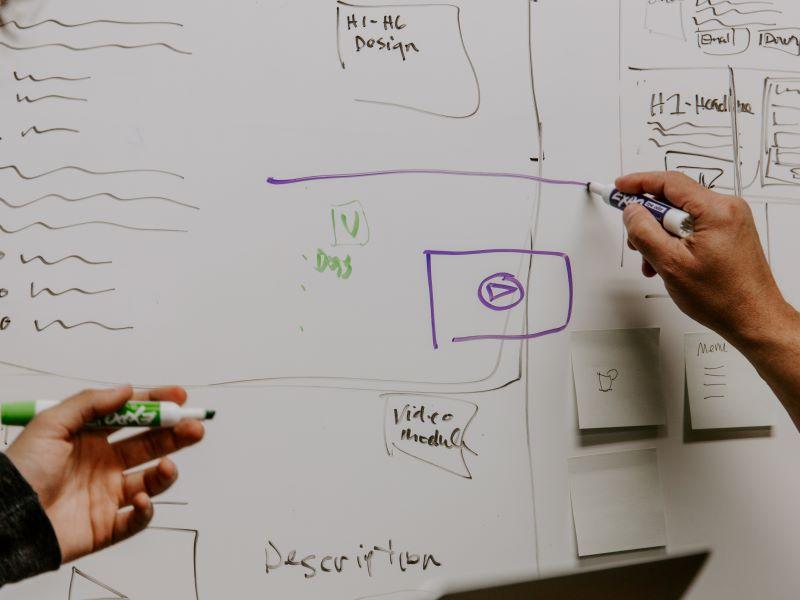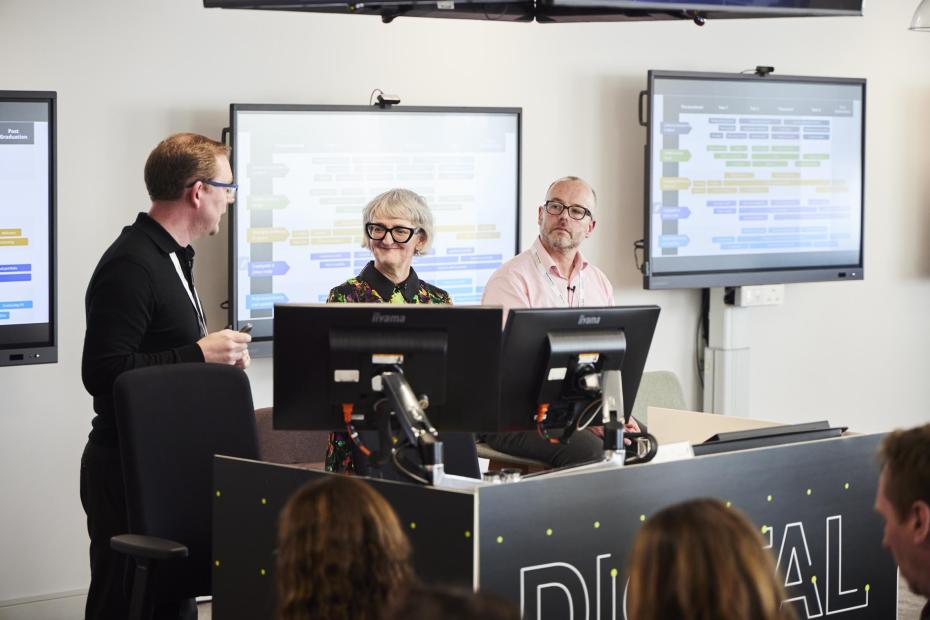Higher education conditions undergraduate students to perceive the assessment process as an assembly line. They submit an assessment, it gets assessed and the cycle repeats. We disregard the student voice in this process, turning students into “professional passive learners”.
Furthermore, written-only feedback limits students’ ability to improve their assessment grades, compared with interactive (auditory or face-to-face) feedback, research has revealed. Does this mean the “traditional” approach to feedback is doomed to fail?
Our proposed solution: the Action Feedback Protocol
We looked to other institutions for solutions and found that Heriot-Watt University has successfully turned its feedback approach from one-way to a continuous conversation between the assessor and students. By using Andrew Maclaren and Thomas Farrington’s Action Feedback Protocol (AFP), the university is creating feedback-literate learners – 95 per cent of undergraduate management students say that the feedback they received was helpful for their academic development.
The AFP is easy to implement and flexible to existing rubrics and learning outcomes. It is centred on three main pillars:
1) Tune the ear
Receiving marks and feedback can be an emotional experience, so we must equip students with the tools to have feedback conversations. In other words, we must “tune the ear” to receiving it. We hold a reflective session called “Making the most out of your feedback” based on resources developed by Maclaren and Farrington, which we will go into further detail about later in this resource.
2) Simplify the message
Second, we must disentangle what we (the markers) and the students think constitutes good feedback. Feedback should be informative, effective and actionable. The AFP thus uses the “three comments approach”, which requires the assessor to give three simple comments in response to a piece of assessed work, in the following order:
- Motivational: What has the student done well, and should be reinforced?
- Informational: What was or were the main area(s)of weakness?
- “Feed-forward”: What should the student(s) work on to improve in the future?
Whereas the motivational and informational comments are specifically related to the assessment, the “feed-forward” comment points beyond the scope of the assessment, either towards other summative assessments in a course, other courses in a programme or broader academic practice.
3) Encourage action
Finally, what makes the AFP stand out from the traditional feedback sandwich is the encouragement to take action. For each feedback comment, students must write an action point that they will complete for the next assessment.
Creating an action for their motivational comment may not be as intuitive. However, we believe this is the most powerful part of the AFP because it encourages the student to focus on what they did well and shifts the focus from feedback being about what they should have done better, to a more holistic image of their performance and their path to improvement.
An example of a motivational comment could be “Your essay was very well referenced, and it is clear you have done extensive background research on the topic.” The associated action point would therefore be “I spent a lot of time reading before writing, and this paid off in the essay. In the future, I should prioritise my research before trying to complete an assignment.”
How the AFP looks in practice
We trialled the AFP approach in two courses: GeoSciences outreach and engagement (GO&E) and Research training for geophysics (RTG).
GO&E evaluation focuses on authentic assessment and student engagement. RTG assessment, on the other hand, is more traditional: a literature review and individual written and academic performance in a specialised group research project.
In both courses, we changed the feedback format to align with the “simplify the message” approach. However, as these courses are very different, the way we used the AFP in each course was slightly different.
In GO&E, there are six assessment deadlines spread throughout the course. The first assessment was formative, and in that, we encouraged the supervisors to provide the feedback verbally. After each assessment, the supervisory team encouraged and guided students to create their action points, using a mix of the “tune the ear” and “encourage action” steps in the AFP. They regularly revisited these points with each student, making it a continuous process.
In RTG, there are two major assessments, both written: the literature review and the group report presentation. Markers assessed the literature review as usual according to the four marking criteria: content; communication, presentation and referencing. Whereas in GO&E, the students received three comments for each assessment, RTG students received three comments for each marking criterion. After receiving both individual and class-wide feedback, we ran our “Making the most out of your feedback” session.
We started the session by focusing on the week that had just passed, asking students about good and bad days and what made them good or bad, along with what they could learn from them. We then translated this to thinking about feedback, asking questions such as:
- What was an assignment for which you received positive or negative feedback?
- What could you learn from this feedback?
- How could you use this feedback in your future assessments?
Then we went through the whole-class feedback, asked students to rank how much the feedback applied to their individual assignments and gave them time to write action points from their literature review feedback to use in their group project reports.
How did it go?
Students received the AFP well in both courses. Given the nature of assessment and supervision in GO&E, it felt very natural to make the assessment feedback process more conversational and empower the students to create action points based on both their strengths and weaknesses.
In RTG, we rolled out AFP in the more “traditional” sense with dedicated class time to train the students to “tune the ear”. After running the “Making the most of your feedback” session, we polled the students on how they perceived current feedback methods and whether they preferred this new approach. Ninety per cent of the cohort welcomed using the AFP in most or all of their courses, and a similar proportion felt more inclined to use their feedback if presented in this way.
Where do we go from here?
We believe implementing a system like the AFP would benefit nearly all courses. It is easy to incorporate into pre-existing marking rubrics and can streamline the marking processes. Most importantly, it empowers the student voice.
We therefore encourage colleagues to:
- Train students in this approach to feedback from day one
- Run events on “tuning the ear” and “encouraging action” for the entire cohort.
Adopting the AFP moves away from the assessment production line we see in schools and standardises feedback practices across multiple courses. We therefore encourage all courses, particularly large, cohort-wide, pre-honours courses to do the same.
This article originally appeared on the University of Edinburgh’s Teaching Matters blog.
Frederik Dahl Madsen is a PhD student and tutor, demonstrator and representative of the School of GeoSciences. Kay Douglas was a widening participation and outreach coordinator and course organiser (now retired). Both at the University of Edinburgh.
If you would like advice and insight from academics and university staff delivered direct to your inbox each week, sign up for the Campus newsletter.




comment